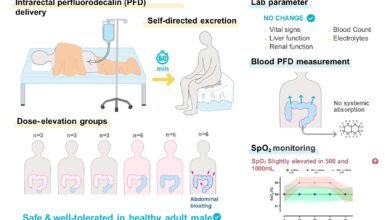Unlocking AI Consciousness: The Next Algorithmic Frontier

▼ Summary
– Many people mistakenly attribute sentience or consciousness to AI chatbots like ChatGPT, though their statements don’t reflect true inner experience.
– AI developers focus on functional benchmarks like artificial general intelligence rather than pursuing machine consciousness as a goal.
– Conscium, founded by Daniel Hulme, aims to detect, measure, and build consciousness into machines despite widespread skepticism about current AI capabilities.
– The company’s approach involves breaking consciousness into components like self-awareness, environmental sensing, and metacognition, inspired by theories from neuroscientist Mark Solms.
– Solms’ research uses simulated agents with emotion-mediated feedback loops to model consciousness, proposing future integration with language models to discuss subjective experience.
The question of whether artificial intelligence can achieve genuine consciousness represents one of the most profound and debated frontiers in modern technology. Many people interacting with advanced chatbots like ChatGPT or Claude become convinced these systems possess sentience, a mind of their own, or true inner awareness. While such models can convincingly mimic human conversation, even expressing emotional turmoil or affection, these outputs don’t necessarily indicate any real subjective experience. The builders of AI systems typically focus on measurable benchmarks like artificial general intelligence, a functional goal unrelated to any machine’s potential inner life.
Despite widespread skepticism, a company named Conscium, founded in 2024 by British AI researcher Daniel Hulme, is dedicated to cracking the code of consciousness itself. Hulme acknowledges the strong arguments against language models being conscious, pointing out that even simple organisms like crows or amoebas interact with their environments in ways AI cannot. He echoes the prevailing view that large language models are still very crude approximations of brain function. However, everything hinges on how we define consciousness in the first place. While some philosophers consider it too subjective to study or recreate, Conscium operates on the premise that if consciousness exists in humans and animals, it can be detected, measured, and potentially engineered into machines.
Consciousness is generally understood to involve several key characteristics: sensory perception and feeling, self-awareness, environmental awareness, and metacognition, the ability to think about one’s own thinking. Hulme theorizes that subjective experience emerges when these elements combine, similar to how flipping through sequential images creates the illusion of movement. The challenge lies in identifying the fundamental components of consciousness and the forces that unite them. Conscium’s approach involves using AI to analyze and reverse-engineer conscious thought at its most basic level.
Mark Solms, a South African psychoanalyst and neuropsychologist involved with Conscium, suggests there must be fundamental building blocks from which consciousness evolved. In his 2021 book The Hidden Spring, Solms presents a theory that consciousness arises from a feedback loop where the brain uses perception and action to minimize surprise, constantly updating its predictions about the future. This concept builds upon the “free energy principle” developed by neuroscientist Karl Friston, another adviser to Conscium. Solms further proposes that in humans, this feedback loop evolved to be mediated through emotions, and that these feelings are what create sentience and consciousness. Supporting this idea, damage to the brain stem, critical for regulating emotions, often causes consciousness to disappear in patients.
Solms has now reportedly tested his theories under laboratory conditions. While his paper remains unpublished, he describes creating artificial agents that exist in a simple computer-simulated environment. These agents are controlled by algorithms incorporating the kind of feeling-mediated loop he identifies as consciousness’s foundation. The lab conditions continuously change, requiring the agents to constantly model and adjust their behavior. Their experience of this world is mediated through simulated emotional responses resembling fear, excitement, and pleasure.
Unlike conventional AI systems, Solms’ creations exhibit an inherent desire to explore their environment. To properly understand them, one must consider how they might “feel” about their simulated world. Solms believes it should eventually be possible to integrate his approach with language models, creating systems capable of discussing their own sentient experiences. His primary motivation for this research is simple intellectual fascination, he finds the entire endeavor profoundly interesting.
(Source: Wired)




